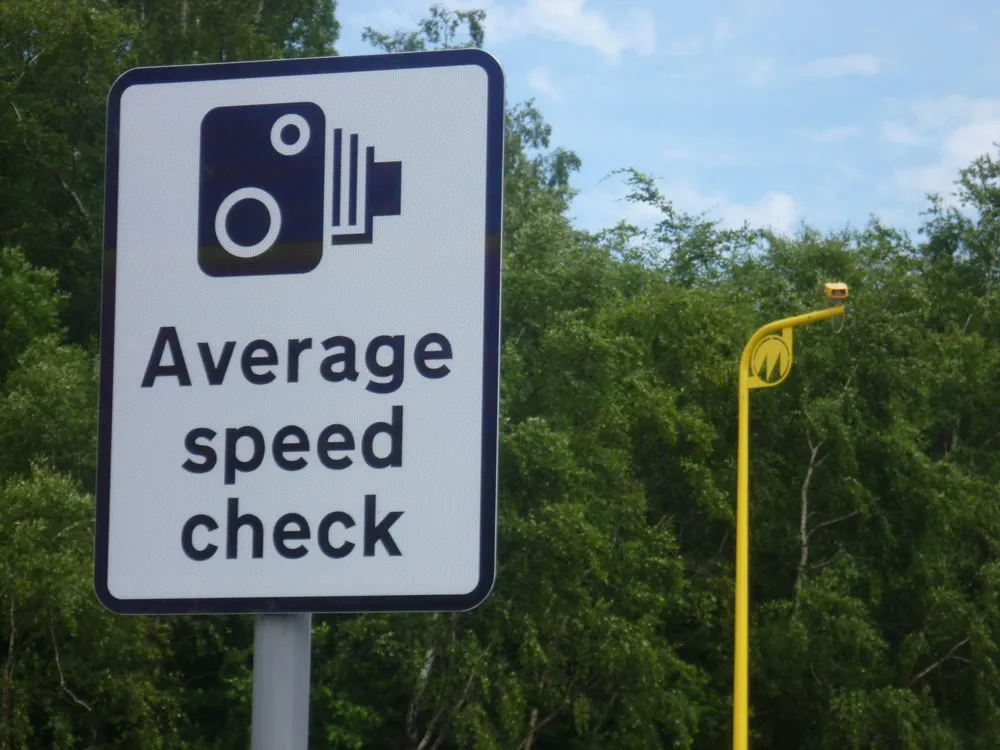New data published by transport Scotland indicates that accident and casualty rates on the A9 have fallen dramatically in the first year of operation of the new average speed cameras. From the beginning of November 2014 to October 2015, two fewer people have been killed and 16 fewer people have been seriously injured between Dunblane and Inverness, while the number of ‘fatal and serious accidents’ between the two towns is down by almost 59 per cent, with ‘fatal and serious casualties’ down by approximat
January 26, 2016
Read time: 3 mins
New data published by transport Scotland indicates that accident and casualty rates on the A9 have fallen dramatically in the first year of operation of the new average speed cameras.
From the beginning of November 2014 to October 2015, two fewer people have been killed and 16 fewer people have been seriously injured between Dunblane and Inverness, while the number of ‘fatal and serious accidents’ between the two towns is down by almost 59 per cent, with ‘fatal and serious casualties’ down by approximately 64 per cent.
The data also shows that no one was killed or seriously injured between Dunblane and Perth and the number of ‘fatal and serious accidents’ between Perth and Inverness is down by almost 45 per cent, with ‘fatal and serious casualties down’ by almost 58 per cent.
More recent figures confirm that the downwards trend is continuing with no fatal accidents on the A9 in the second half of last year.
Police Scotland have also indicated that the latest quarterly data from the average speed camera system continues to demonstrate extremely low levels of drivers being reported; with the latest figures indicating an average five drivers a day exceeding the operational threshold.
Chief Superintendent Andy Edmonston from Police Scotland said: "The reduction in serious and fatal injury collisions on the A9 in the first year following installation of the safety cameras is welcome. However, while the number of fatalities decreased by a quarter, the case remains that six people sadly lost their lives on the road.
"It is apparent the safety cameras have contributed towards changing driver behaviour, particularly in respect of complying with speed limits. Since the cameras were introduced just over 6,000 vehicles have been detected travelling at excessive speed and subject to enforcement action. To put some perspective on this figure, during the same period there were over 18 million vehicle movements along the route. This represents an extremely high level of compliance.
Transport minister Derek Mackay said: “We are monitoring the performance of the A9 and welcome the figures which indicate that the route continues to perform far more safely than before. ‘Fatal and serious casualties’ have more than halved and there are clear and substantial reductions in fatal casualties both between Perth and Inverness and between Perth and Dunblane.
From the beginning of November 2014 to October 2015, two fewer people have been killed and 16 fewer people have been seriously injured between Dunblane and Inverness, while the number of ‘fatal and serious accidents’ between the two towns is down by almost 59 per cent, with ‘fatal and serious casualties’ down by approximately 64 per cent.
The data also shows that no one was killed or seriously injured between Dunblane and Perth and the number of ‘fatal and serious accidents’ between Perth and Inverness is down by almost 45 per cent, with ‘fatal and serious casualties down’ by almost 58 per cent.
More recent figures confirm that the downwards trend is continuing with no fatal accidents on the A9 in the second half of last year.
Police Scotland have also indicated that the latest quarterly data from the average speed camera system continues to demonstrate extremely low levels of drivers being reported; with the latest figures indicating an average five drivers a day exceeding the operational threshold.
Chief Superintendent Andy Edmonston from Police Scotland said: "The reduction in serious and fatal injury collisions on the A9 in the first year following installation of the safety cameras is welcome. However, while the number of fatalities decreased by a quarter, the case remains that six people sadly lost their lives on the road.
"It is apparent the safety cameras have contributed towards changing driver behaviour, particularly in respect of complying with speed limits. Since the cameras were introduced just over 6,000 vehicles have been detected travelling at excessive speed and subject to enforcement action. To put some perspective on this figure, during the same period there were over 18 million vehicle movements along the route. This represents an extremely high level of compliance.
Transport minister Derek Mackay said: “We are monitoring the performance of the A9 and welcome the figures which indicate that the route continues to perform far more safely than before. ‘Fatal and serious casualties’ have more than halved and there are clear and substantial reductions in fatal casualties both between Perth and Inverness and between Perth and Dunblane.








